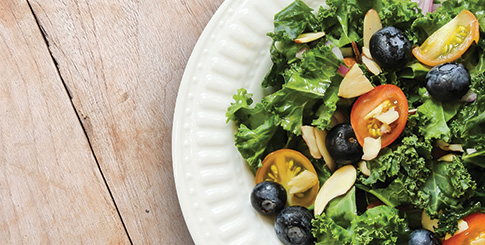Members of the media commonly use the term “superfoods” as a label to identify fresh and packaged products with strong, often targeted, health benefits. Many fruits, vegetables, and herbs have been termed superfoods at one time or another, and the label has even extended to certain grains, fish, nuts, and dairy products.
A superfood designation has proven very successful in driving sales for various segments of the food industry, especially fresh produce. “The berry category really benefited from the trend,” comments Jim Roberts, vice president of sales for Naturipe Farms LLC, headquartered in Estero, FL. What’s surprising is when: not recently, but as much as a decade ago. Roberts reports blueberries were the first to take off under a superfood designation, followed by blackberries, strawberries, and raspberries. All are associated with high levels of antioxidants, Vitamin C, lycopene, and flavonoids.
The connection between berries and health was initially put forth by medical journals, Roberts explains, with the link then picked up by television and a cadre of physicians. “The 10-year growth in berries has been phenomenal, and that’s a big reason why,” he says. “We were able to ride the wave of free media.”
North American per capita blueberry consumption grew nearly 50 percent between 2010 and 2015, according to the U.S. Highbush Blueberry Council, with fresh blueberry sales at U.S. retail stores reaching $1.5 billion a few years ago. Consumer awareness of berry health benefits rose by 115 percent from 2004 to 2014.
Julie Lucido, owner and CEO of Fresno, CA-based Marketing Plus, which has assisted berry growers and other produce companies in their marketing efforts, says consumer demand is driving the superfood trend at this point. “Baby Boomers are into health, especially as they age,” she comments. “And millennials are making thoughtful efforts to make good choices for their young families.”
“Consumers are intrigued when they find produce with high levels of nutrients and antioxidants,” adds Karen Caplan, CEO and president of specialty produce supplier Frieda’s Inc. in Los Alamitos, CA. Her company has seen growth for a number of commodities identified as superfoods, spurred in part by bloggers and magazines featuring stories on the topic. “It’s all those Baby Boomers who are looking for the fountain of youth,” she quips.
Defining the Term
Despite the wide use of terms like superfood or superfruit, there is no specific meaning assigned to the ‘super’ prefix, nor are the terms rooted in scientific fact. Superfoods are generally fruits, vegetables, or other items considered better than competing commodities in bringing consumers healthful benefits—ranging from fighting disease or aiding in digestion to promoting brain or heart health.



